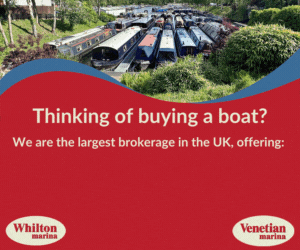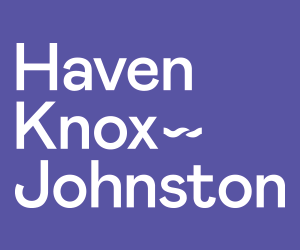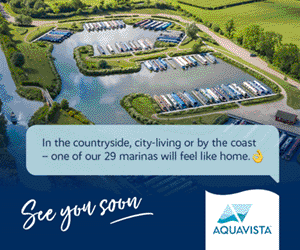Waterways Chaplaincy
Who can boaters turn to when they’re in need of support? Tony Jones speaks to representatives of the Waterways Chaplaincy, who are helping waterway users in need

The church and the waterways have been linked for centuries. Floating chapels and Sunday schools for kids were once common canal features, and even today a surprising number of boats display a window sticker proclaiming the owners to be members of the Boaters’ Christian Fellowship. But over the last couple of decades, another waterways-focussed Christian organisation has been gradually growing in number.
The Waterways Chaplaincy was formed to provide help and support to those who find themselves struggling for whatever reason. The chaplains are all volunteers from local churches who regularly visit the waterways, offering help, companionship and a listening ear to anyone they may meet at the waterside. This might be boaters, cyclists, walkers, runners, anglers, magnet fishers or canal workers.
Pastorally proactive, spiritually reactive
“The first thing we should stress is that Waterways Chaplains aren’t there to convince you to go to church or to become a Christian,” explains Reverend Mark Chester, the organisation’s Senior National Waterways Chaplain. “Our primary aim is to be ‘pastorally proactive and spiritually reactive’, which means that chaplains will proactively seek out those who might need some support and do what we can to help them, but we will only discuss religion reactively if people reach out to us for that.”
There are many ways a Waterways Chaplain can offer support to those who live on and use the UK’s waterways, such as:
• Providing food parcels
• Helping to deal with authorities, such as CRT, local councils and benefit claims
• Helping with laundry, shopping, getting fuel and other essential needs
• Calling out an engineer through their retainer account with River Canal Rescue (RCR)
• Just stopping by for coffee and a chat.
The Chaplains’ work adopts a three-pronged model of support, known as a ‘strategic triangle’, where they will deal with emergencies, discourage dependence, and encourage independence.
“Our first goal is to deal with the immediate emergency,” says Reverend Mark. “More often than not, that first step will be helping someone with the challenges they experience when dealing with bureaucracy, or perhaps pointing them in the right direction when they don’t know where to turn. We aim to help the person get to a position where they can fend for themselves. Being a waterways-based organisation it makes sense to use a swimming analogy. We’ll be there to throw a lifebuoy if you’re drowning. Then, we’ll teach you how to swim. And finally, we try to show you dry land to make sure you won’t fall in again.”
The movement
Tracing the origins of the Waterways Chaplaincy isn’t easy, largely because it appears to have evolved organically over many years. During my conversation with Reverend Mark he explained that the first Waterways Chaplains were an unofficial arm of the Salvation Army who identified a need for practical support among the canal communities sometime during the 18th century, and especially around the time of World War II.
The Chaplaincy, as we know it today, really began around the time of the 2008 financial crisis. More and more people were moving aboard boats to live, with the lifestyle becoming a refuge option for those who had been forgotten or forsaken by mainstream society – what Mark refers to as “the least, the lost and the last”. A Salvation Army member named Jenny Dibsdall established a chaplaincy movement in the St Albans area, which eventually spread not only to other areas, but to other branches of the Christian church.
What began as a small, informal and localised service has grown into a movement which today has around 100 Waterways Chaplains and probationary trainees, covering the whole, nationwide network. There are 12 ‘hubs’ nationwide, each with a senior chaplain who will help coordinate the local area and provide support to the local chaplains through regular meetings.
Reverend Mark, who became Senior National Chaplain in 2015, is eager to define the Waterways Chaplaincy as a ‘movement’ rather than an ‘organisation’. So of course, I had to ask what the difference might be. “An organisation prioritises looking after itself, whereas a movement exists for a greater purpose,” he explained. “If we do our job well, we make ourselves obsolete. That’s the ultimate aim.”
Becoming a chaplain
Mark has a goal to increase the number of Waterways Chaplains to 150 over the next few years. “People all over the world have been facing extraordinary challenges in the last few years, and it doesn’t appear to be getting any easier. The Covid pandemic caused problems for all of us, and the cost-of-living crisis will only compound those issues. Some people will understandably find that they aren’t coping very well. That’s why we need chaplains now more than ever.”
Most chaplains find their way into the movement through word of mouth when talking with other chaplains they meet on the towpath. The chaplaincy is an ecumenical movement, which means they welcome recruits from a number of different Christian churches. To become a chaplain an applicant must be Christian and “be in good standing with their local church”. While people of other religions can’t become chaplains, they’re still welcomed into the movement in other capacities.
Potential recruits are initially invited for an informal interview with their local senior chaplain, after which they’ll then be assigned a mentor and become an official ‘trainee’. Their training then progresses over the next few months when the trainee will keep a mentoring log to demonstrate their acquisition of skills and experience. The trainee will get to know the local facilities around their canal – the pharmacies, food banks, churches, local authority offices and the like. They’ll undertake a Waterside Assistants course to ensure they have sufficient waterways acumen to assist boaters safely and effectively, and they’ll be introduced to other local boating services and chaplaincy folk.
Once the trainee, their mentor and the senior chaplain agree to their readiness, the trainee is then ‘commissioned’ to begin work as a fully fledged Waterways Chaplain. A service will be held in their honour at their local church, with local Waterways Chaplains in attendance to offer their support and congratulations. Then it’s time to hit the road – or rather – towpath.
A Waterways Chaplain makes three commitments:
1. To walk the towpath for a mile a week or one hour a week. All Chaplains will wear a gilet which signals to people that they are available to talk. Sometimes it’s the person needing help who will reach out, while other times it will be a third-party person who indicates someone is having difficulties.
2. Meet with local hub members once a month. The meeting will enable Chaplains to discuss local issues and recent events, compare notes and support each other’s work. There’ll also usually be a period of prayer.
3. Undertake two training days each year. The training will support the Waterways Chaplain’s work in some way. For example, one such recent course helped Chaplains to understand the effects of post-combat PTSD – an issue affecting many boaters.
Funding
It costs an estimated £450 to recruit and train a Waterways Chaplain and £250 each year to support their work. Funding to cover this is currently provided mostly by a handful of larger charities, but one of Reverend Mark’s aims is for the Chaplaincy to source its own funding and be self-sufficient. “We do attract an amount of private donations, and this is something we’re eager to build upon as the Chaplaincy evolves and grows.”
Currently, just three people in the Chaplaincy movement earn a wage, with everyone else being volunteers. “Volunteers are urged to claim any expenses they amass, but few of them actually do so,” says Reverend Mark. “This is something we’re determined to change because it could act as a barrier for some who might want to become Chaplains.”





